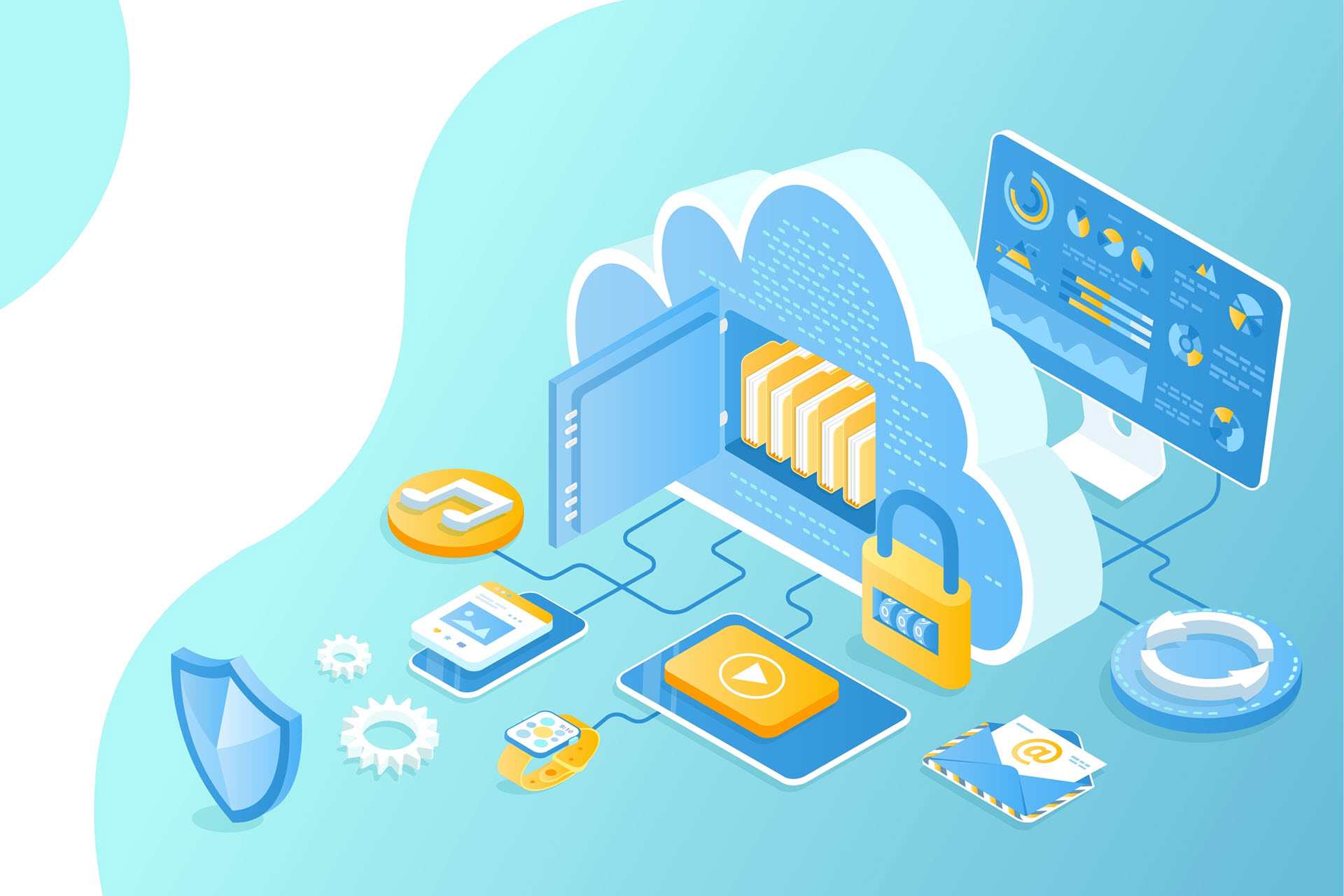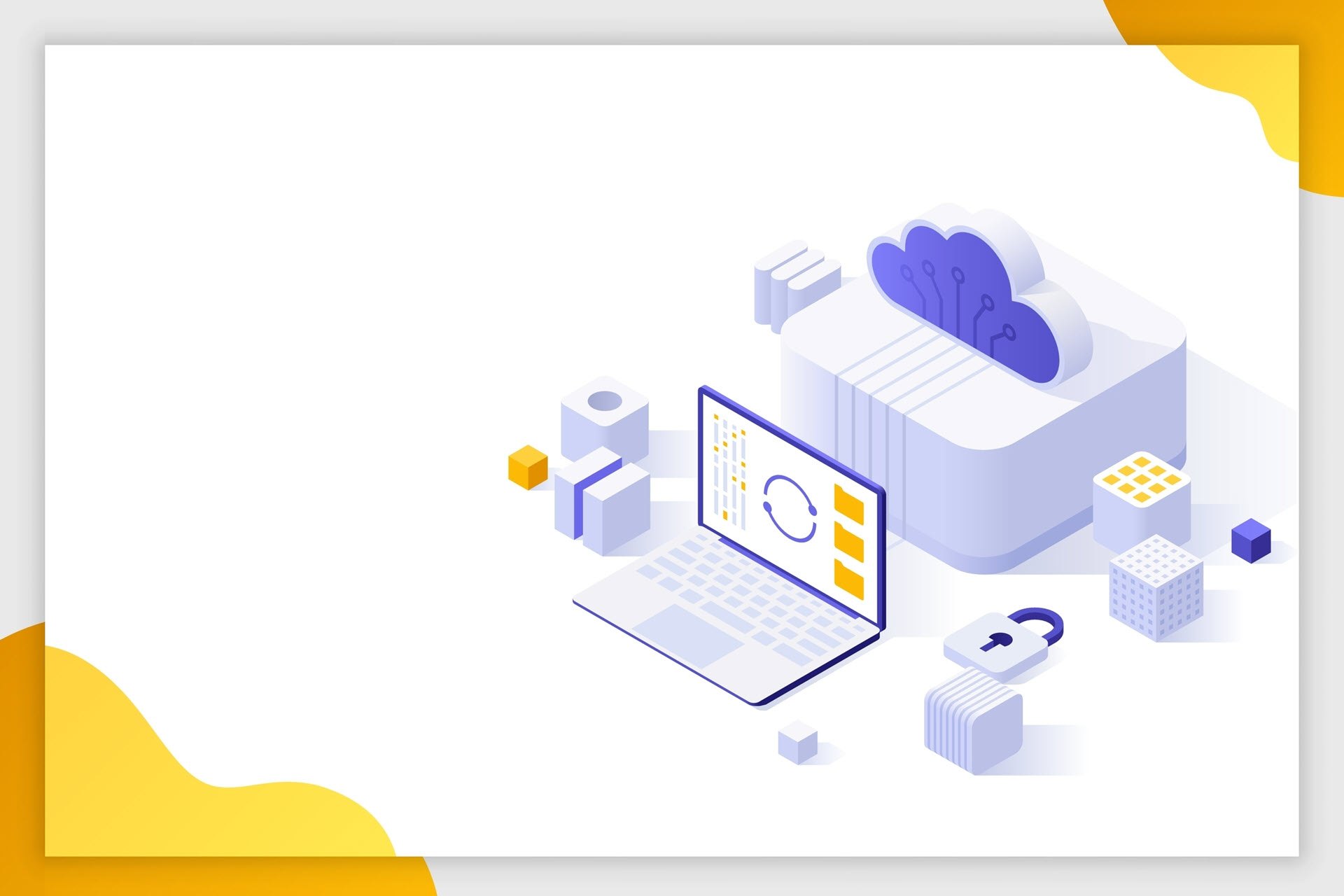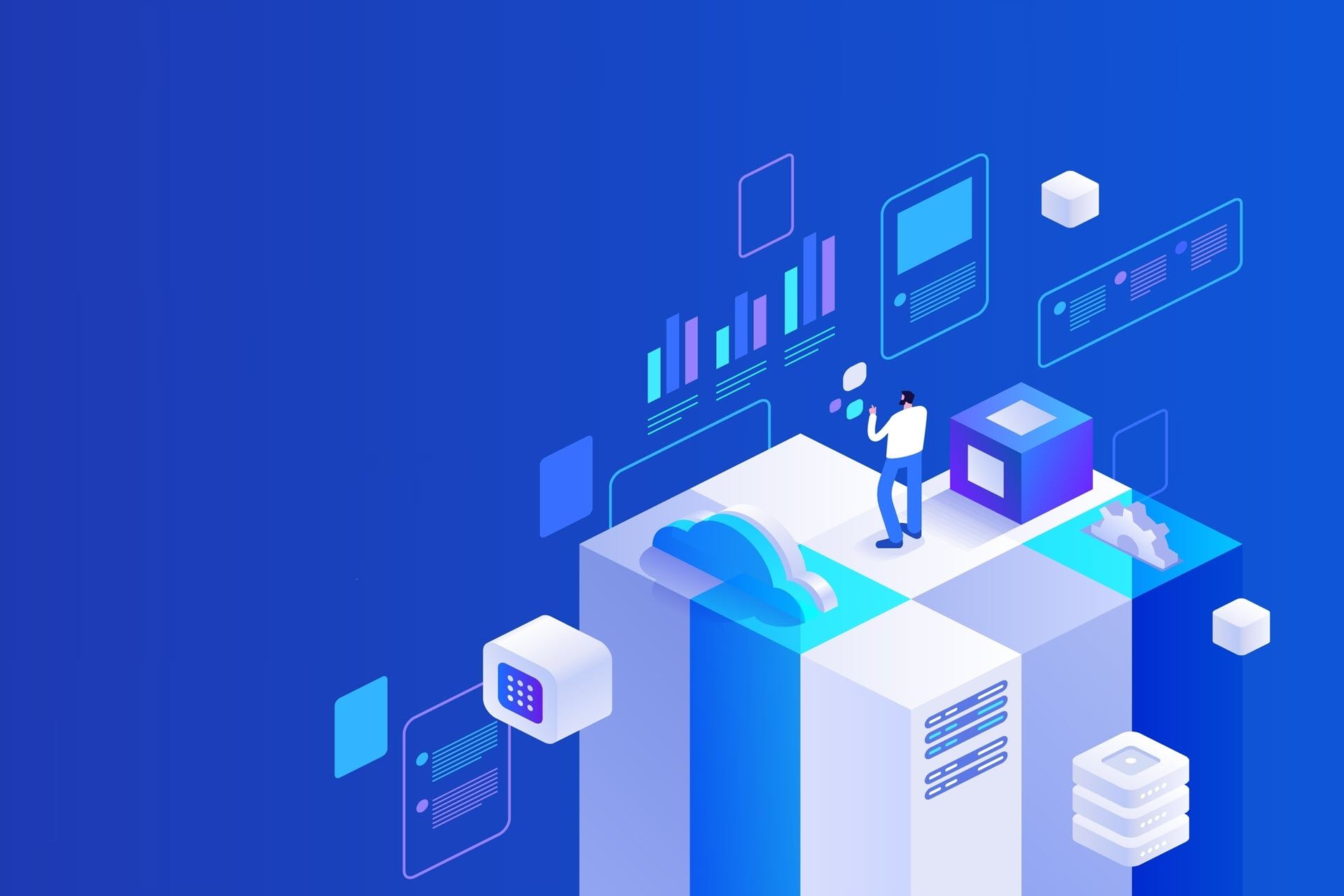One of the most common reasons companies migrate to the cloud is to enable developers to build and deploy applications at higher speeds. While cloud resources accelerate the software development life cycle (SDLC), security teams often struggle to keep track of and secure dynamic cloud-based environments.
One of the essential steps to securing cloud services is to develop an effective cloud security monitoring strategy. Maintaining an ongoing view of cloud-based assets ensures these resources do not become a security blind spot and that the convenience of the cloud does not come at the price of safety.
This article offers an in-depth look at cloud security monitoring and the importance of ensuring proper oversight in cloud-based environments. Jump in to learn why this type of monitoring is a top priority for every company that relies on cloud computing.
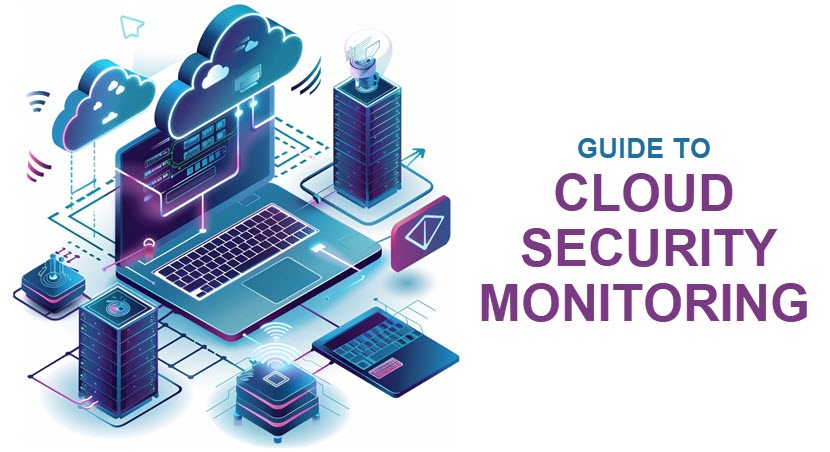
Check out our article on the main advantages and disadvantages of cloud computing to assess whether cloud-based IT resources are the right choice for your project.
What Is Cloud Security Monitoring?
Cloud security monitoring is the process of overseeing cloud environments to detect and address potential threats. This type of monitoring involves continuous analysis of cloud-based applications and data for signs of the following issues:
- Security flaws an attacker could exploit (outdated software, unpatched systems, weak encryption protocols, etc.).
- Suspicious activities, such as sudden spikes in data transfers, unexpected changes in user privileges, or too many failed login attempts.
- Misconfigurations like public-facing storage buckets, overly permissive access controls, or unsecured APIs.
- Attempts to transfer data off the cloud without authorization (so-called data exfiltration).
- Activities or settings that violate regulatory standards or organizational guidelines.
- Malicious software (e.g., spyware, ransomware, trojans, worms).
- The use of unauthorized applications or services within the environment (so-called shadow IT).
- Instances where users or applications exceed their permitted roles or privileges.
The primary objective of cloud security monitoring is to detect potential threats and risks before they escalate into significant breaches. Additionally, most advanced cloud monitoring tools have built-in auto-mitigation capabilities that remove threats by following instructions outlined in the cloud security policy.
Monitoring is vital to all cloud deployment models. If you are running an on-site private cloud or any hybrid cloud architecture that relies in part on on-prem equipment, your cloud monitoring strategy also requires you to monitor physical on-site hardware.
The importance of this process is clearly reflected in its market growth. The cloud monitoring market, which was worth around $2.2 billion in 2023, is projected to reach nearly $10 billion by 2030 (compound annual rate of 24.1%).
Worried about the safety of your current cloud-based environment? If yes, move your assets to pNAP's Data Security Cloud, a platform we developed in collaboration with Intel and VMware. DSC keeps data safe with a mix of strict segmentation, advanced threat intelligence, and top-tier physical security.
How Does Cloud Security Monitoring Work?
Cloud security monitoring works by employing a combination of tools to oversee and secure cloud-based environments. These tools integrate with cloud platforms using APIs or built-in services to access security and performance-related data.
Cloud monitoring tools analyze data from multiple sources to provide real-time visibility into the security posture of cloud applications and data. These tools continuously examine the following data:
- Application, system, and access logs.
- Configuration scans.
- Packet data and flow logs from network communications.
- Information about user actions (e.g., login attempts, file access, configuration changes).
Monitoring tools consolidate all data into a centralized platform to provide a single-pane-of-glass view of cloud-based activities. Tools analyze collected data to identify deviations from normal behavior, such as sudden spikes in data transfers or unauthorized changes to settings. Most tools use machine learning (ML) and anomaly detection algorithms to identify these threats.
Monitoring systems generate real-time alerts when they detect potential threats or anomalies. Systems send alerts to security teams via dashboards, email, or integrated SIEM tools. Some monitoring tools can also automatically respond to threats by following instructions outlined in the organization's security policies. Here are the most common types of responses:
- Blocking suspicious IP addresses.
- Disabling compromised user accounts.
- Rolling back unauthorized configuration changes.
- Isolating infected instances to prevent malware spread.
While automation plays a significant role, human intervention is still essential for complex threats or incidents requiring contextual understanding.
Most cloud monitoring systems include reporting features that help comply with standards like GDPR, HIPAA, and PCI DSS. These tools generate compliance reports and help identify non-compliant resources. Some cloud monitoring tools also provide recommendations for proactive security improvements. For example, a tool might suggest that the team adopt a stricter access control policy or delete underutilized resources that someone could misuse.
What Are the Benefits of Cloud Security Monitoring?
Cloud security monitoring enables organizations to ensure their teams use the cloud with minimal risk of security incidents. Below is an overview of the most notable benefits of having high visibility levels in cloud environments.
Proactive Threat Mitigation
Cloud monitoring tools enable security teams to identify and address potential threats before they escalate into major incidents.
Instead of relying solely on signature detection, cloud security monitoring tools use behavioral analysis to identify unusual patterns. These anomalies are flagged as potential threats even if they do not match known attack signatures.
Once a threat is identified, the tool either alerts the security team in real-time or proactively removes the threat by initiating automated responses. Attackers have much less dwell time (i.e., the amount of time a hacker has access to a compromised system before detection), which prevents threat actors from escalating to more advanced stages of an attack.
Many cloud monitoring systems incorporate threat intelligence feeds that provide updates on emerging threats, malware signatures, and known attack vectors. These feeds continuously take in information from public databases, private research, and industry collaborations to stay ahead of the latest threats. For example, the system can block traffic from IPs linked to a new ransomware delivery strategy even before an attack specifically targets the organization.
Improved Visibility Across the Cloud
Security monitoring tools identify and map all cloud resources, no matter how frequently the team spins up new instances. A clear mapping of cloud-based assets helps organizations properly track and manage all resources.
Visibility into resources ensures that any deviations from best practices (such as open storage buckets or weak permissions) are quickly identified and resolved. As a result, companies drastically reduce the likelihood of data breaches and leakage.
Cloud security monitoring tools consolidate data from various sources (cloud-native services, third-party applications, network logs, etc.) into a single, unified dashboard. This centralized view eliminates silos and makes it easier for security teams to oversee the environment. A centralized view enables faster detection of anomalies and reduces the risk of oversight due to fragmented monitoring.
High visibility also helps maintain regulatory compliance. Companies can ensure that teams are aware of where sensitive data resides and how it is accessed.
Better Uptime
Downtime, whether caused by security incidents, misconfigurations, or resource failures, has significant financial and operational consequences. Cloud security monitoring helps organizations avoid such disruptions by maintaining a secure and stable environment.
Here's an overview of how cloud security monitoring boosts uptime:
- Continuous monitoring identifies and eliminates potential threats (malware, unauthorized access attempts, DDoS attacks, etc.) before they disrupt operations.
- Monitoring tools detect and alert teams to misconfigurations in real-time, enabling swift correction before they impact availability.
- Monitoring systems prevent outages caused by resource exhaustion or system crashes by identifying unexpected traffic spikes and resource overuse.
- Advanced cloud security monitoring tools can automatically isolate affected resources and reroute traffic to ensure business continuity during disruptions.
- Monitoring tools continuously track system performance, which helps detect and resolve bottlenecks that could otherwise lead to outages.
Our article on cloud outages explains how worried you should be about a third-party cloud provider's infrastructure going down.
Improved Operational Efficiency
Cloud security monitoring tools automate log analysis, threat detection, and compliance checks. As a result, these tools reduce the need for manual intervention. The same logic applies to threat responses, where tools handle tasks such as isolating suspicious resources or revoking access rights.
With routine security tasks automated, security teams can focus on higher-value activities, such as:
- Developing new measures to address emerging threats.
- Enhancing infrastructure and applications to improve performance and security.
- Investigating the latest threat trends and applying findings to the organization's security policies.
- Developing and testing disaster recovery and incident response plans.
Collaboration between teams also improves since centralized tools provide a shared understanding of the security posture. Enhanced coordination removes redundancies and accelerates decision-making during incidents. Additionally, cross-team collaboration fosters innovation by integrating diverse perspectives into the security strategy.
Cost Savings
Monitoring helps organizations reduce both direct and indirect expenses associated with security incidents. Here are the main ways cloud security monitoring leads to cost savings:
- Fewer data breaches. Data breaches result in substantial costs, including potential lawsuits, legal fees, and long-term losses due to reputational damage. Cloud security monitoring identifies and mitigates threats before they can cause a breach, preventing these costly incidents.
- Less downtime. Whether malicious or accidental, security incidents disrupt operations and cause revenue losses or productivity issues. Continuous monitoring ensures faster detection and resolution, minimizing downtime and its associated costs.
- Less chance of regulatory penalties. Monitoring ensures compliance by identifying and addressing security gaps, protecting the organization from hefty non-compliance fines.
- Optimized resource allocation. Cloud monitoring tools effectively identify underutilized, misconfigured, and unnecessary resources. As a result, organizations get to reduce cloud waste and optimize cloud computing costs.
- Minimal recovery costs. By detecting and mitigating threats early, monitoring helps companies avoid recovery expenses (data restoration, system reconfiguration, public relations efforts, etc.).
- Protection against hidden costs. Early detection of misconfigurations and shadow IT instances prevents unplanned and unnecessary expenses.
Our article on cloud cost management tools presents 14 different solutions you can use to ensure your cloud expenses never spiral out of control.
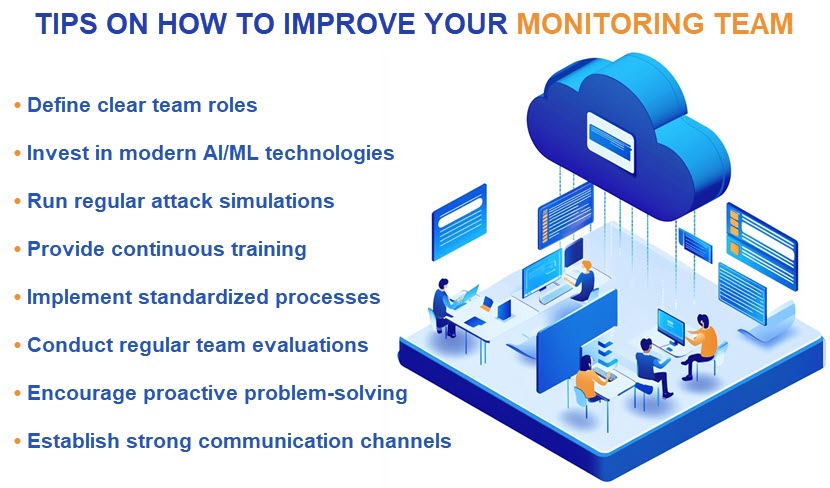
Cloud Security Monitoring Features to Look For
Regardless of whether you use one tool or a mix of several solutions, your monitoring setup should have certain features to help you keep the cloud environment safe. Here are a few critical capabilities you need to effectively safeguard cloud-based systems:
- Continuous surveillance of cloud resources that detects threats, anomalies, and performance issues in real-time.
- Support for the monitoring of virtual machines (VMs), containers, serverless functions, and storage buckets.
- Capability to identify and prioritize vulnerabilities based on different contexts (cloud, business, workload, etc.).
- Collection, aggregation, and analysis of logs from multiple sources (servers, applications, cloud platforms, etc.).
- Instant alerts through email, SMS, or dashboards.
- ML-powered capabilities to identify suspicious patterns, behaviors, and anomalies indicative of malicious activities.
- Preconfigured templates and continuous auditing to ensure adherence to regulatory standards.
- Role-based access controls (RBAC) and integration with identity and access management (IAM) solutions.
- Auto-mitigation capabilities that isolate threats, revoke access, run predefined recovery scripts, or apply security patches without requiring manual intervention.
- Automatic identification of insecure settings, such as open ports, overly permissive access controls, or unencrypted data.
- Insights into resource usage that help eliminate unnecessary instances.
- Features for incident management (event correlation, root cause analysis, playbook execution) and post-incident analysis.
- Separate views and controls for different teams, roles, or clients.
Our article on the market's top cloud monitoring tools presents 28 feature-rich solutions you can use to boost the visibility of your cloud environments.
Cloud Security Monitoring Best Practices
Here are some best practices you can implement to maximize the effectiveness of your cloud monitoring strategy:
- Only use tools that provide real-time and continuous visibility into cloud resources and applications.
- Focus monitoring efforts primarily on protecting high-value cloud assets, sensitive data, and critical applications.
- Implement monitoring from the earliest stages of the SDLC to catch security issues before they escalate into major problems.
- Automate routine tasks like log analysis, compliance checks, and alert triaging for greater efficiency.
- Use unified tools to monitor hybrid and multi-cloud environments to ensure consistent security coverage.
- Regularly review and adjust monitoring policies to account for evolving threats and changes in the cloud environment.
- Ensure that monitoring integrates seamlessly with all on-prem systems and third-party tools used by your security team.
- Restrict monitoring tool access to authorized personnel to reduce the risk of misuse or insider threats.
- Use granular permissions to align access rights with job roles and responsibilities.
- Configure alerts to be specific, actionable, and prioritized based on incident severity.
- Store logs securely for analysis, auditing, and forensic investigations.
- Use context-aware alerting by contextualizing alerts based on user roles, past behavior, and resource sensitivity.
- Promote communication between security, IT, and DevOps teams to eliminate silos and ensure monitoring safely aligns with all operational needs.
- Avoid alert fatigue by fine-tuning thresholds to reduce the number of false positives.
- Regularly train staff members on using monitoring tools and responding to incidents. Also, conduct drills and simulations to test the effectiveness of all incident response protocols.
- Align monitoring strategies with disaster recovery plans to aid in faster recovery during incidents.
- Conduct regular vulnerability scans, penetration testing, and risk assessments to identify gaps in monitoring.
Our article on cloud security best practices offers further advice on how you can keep malicious actors and programs out of your cloud environments.
Cloud Security Monitoring Tools
The cloud monitoring tool you choose must have all the required features plus must integrate seamlessly with your current tool stack. Here are some of the market's top tools you can use to ensure robust cloud monitoring:
- Datadog Security Monitoring. This monitoring platform has various built-in security features that help keep your cloud safe (real-time detection and correlation, seamless integration with infrastructure and application monitoring, customizable dashboards, etc.).
- Palo Alto Prisma Cloud. This platform is ideal for multi-cloud strategies that involve complex workloads and multiple providers. Palo Alto Prisma Cloud's standout features are real-time misconfiguration detection and automated compliance checks.
- Splunk. This versatile platform combines SIEM and cloud security analytics. Splunk also has ML-powered threat detection, real-time monitoring for hybrid clouds, and integrations with various third-party platforms.
- Trend Micro Cloud One. Among other features, this cloud security suite offers comprehensive protection against malware, vulnerabilities, misconfigurations, and unauthorized activities. Trend Micro Cloud One focuses on container and serverless security, which makes the tool a common choice for DevOps pipelines.
- Snyk. This developer-focused tool excels at detecting vulnerabilities in code, dependencies, and containers. Snyk's primary users are DevOps teams focused on securing cloud-native applications.
- Qualys Cloud Security. This cloud security solution specializes in vulnerability and compliance management. Qualys offers continuous vulnerability assessments for cloud assets, policy-based compliance checks, and deep insights into container security.
- New Relic One. This performance monitoring platform combines application performance monitoring (APM) with security insights. New Relic One reliably detects anomalies and correlates events across cloud environments, plus offers AI-powered recommendations for faster incident resolution.
Want a monitoring tool in a similar vein as New Relic but with somewhat different features? See if you can find the right fit in our article on the best alternatives to New Relic.
Cloud Security Monitoring Risks and Challenges
Companies must navigate a variety of risks and challenges when ensuring high levels of visibility across cloud-based environments. Below is a close look at the most notable hurdles companies face with cloud security monitoring.
Cloud Security Monitoring Risks
While cloud security monitoring is necessary, this practice introduces certain risks. Understanding these risks is critical to mitigating them effectively.
The biggest risk of cloud monitoring involves concerns about data privacy. Cloud monitoring tools often collect and analyze sensitive data. Mishandled logs or unauthorized access to monitored data can lead to potential breaches or compliance violations. To counter these risks, companies monitoring sensitive cloud-based data must enforce strict access controls and encrypt data in transit and at rest.
Insufficient coverage is another common risk. Monitoring tools often do not cover all aspects of the cloud environment, either due to budgetary or operational limitations. Insufficient coverage creates security blind spots that experienced hackers can exploit to gain a foothold within the system.
For some companies, cloud monitoring can cause performance overhead. Tools tasked with monitoring large volumes of data consume significant resources, which can impact application performance.
Many companies also struggle with vendor lock-in risks. Organizations relying on a single cloud provider's native monitoring tools often face challenges when they want to migrate to another vendor. This problem is particularly common in multi-cloud migration scenarios.

Cloud Security Monitoring Challenges
Here are the most common challenges security teams face when monitoring cloud environments:
- Managing multi-cloud environments. Monitoring multiple integrated cloud platforms is complex and challenging due to differing tools, configurations, and APIs.
- Handling alert overload. Security monitoring tools often generate an overwhelming number of alerts. Too many notifications can lead to alert fatigue, causing teams to miss critical threats, especially if the tool is prone to false positives.
- Monitoring dynamic environments. The cloud's dynamic nature, with frequent scaling and resource changes, complicates monitoring efforts. Security gaps may arise if monitoring tools or security teams cannot adapt quickly to changes.
- Integrating with legacy systems. Integrating cloud monitoring tools with older on-prem systems can be a complex process. These integrations often create monitoring gaps and operational inefficiencies.
- Filling in skill gaps. Many security teams lack the expertise to operate advanced cloud monitoring tools effectively. Lack of skill can cause delays in threat detection and increased risk exposure.
- Configuring the tool. Setting up and periodically adjusting a cloud monitoring tool can be complex, especially in dynamic environments with many moving parts. Misconfigurations lead to inaccurate monitoring and missed threats.
- Finding the balance between performance and security. Using a monitoring tool to track too much cloud-based data can cause performance-related problems. On the other hand, inspecting too little data leaves companies open to attacks. It's often challenging to strike the right balance between performance and security.
Our article on cloud threats and risks offers an in-depth look at the most notable dangers of using virtualized resources.
Ensure Sufficient Visibility Over Your Cloud Environments
Cloud computing is highly beneficial, but using virtualized resources introduces various new risks that are not a factor with on-prem computing. Without sufficient oversight, the risks of using cloud resources outweigh any IT benefits you can gain from this technology. Ensure your team has a clear-cut plan for monitoring cloud environments before they start moving assets off on-prem servers.
